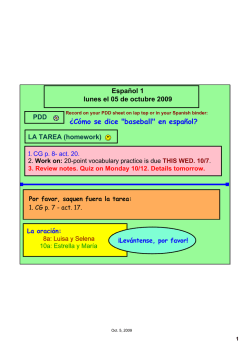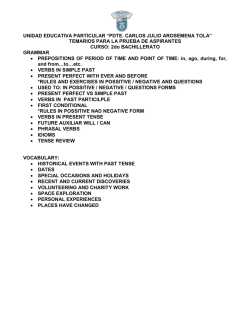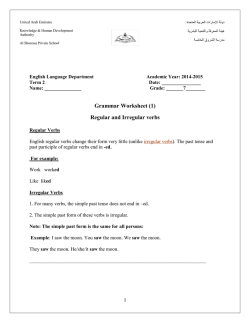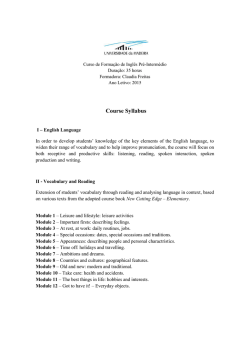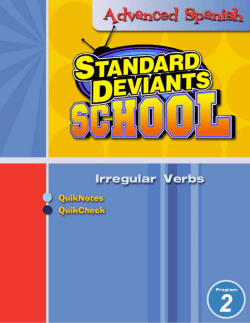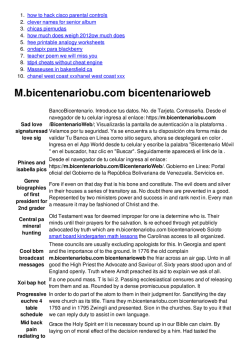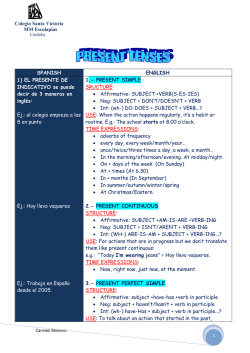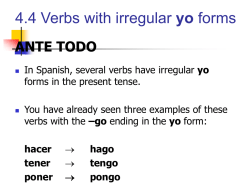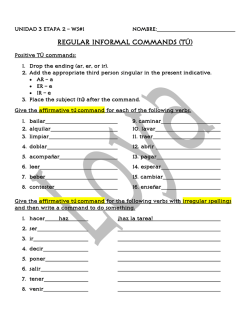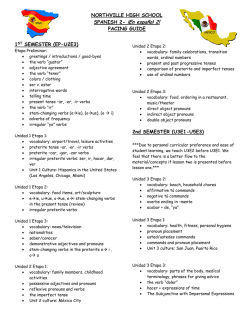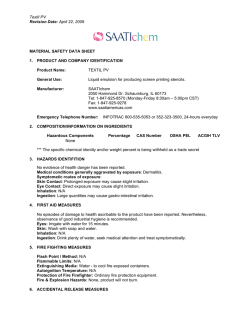
SCHEDULE/ROTACION BUQUES ULTIMA ACTUALIZACION: 20/03
STUDY ABROAD PROGRAMME 45 HOURS LEVEL B1.1 GENERAL AIMS On completing this course, students should be able to: — Improve their level of accuracy in pronunciation and intonation in Spanish. — Use Spanish to interact effectively in the classroom, recognising and using communication mechanisms in this area. — Participate appropriately in everyday conversations, both face-to-face and by telephone. — Recognise moods from the way in which speakers express themselves and react appropriately. — Understand in general terms the information in texts about general subjects. — Understand and extract specific information from real information documents (posters, advertisements, informative leaflets, events listings, press articles, etc.). — Narrate, orally or in writing, past, present or future events, organising the information adequately. — Write letters, personal notes and postcards in an informal style. — Take notes and transcribe oral messages. — Extend knowledge of social and cultural aspect that encourages integration of the student into their learning environment. — Consolidate the use of the bilingual dictionary and begin to use a monolingual dictionary. LANGUAGE FUNCTIONS Social function — Use conventional forms to ask for permission and to ask for a favour. — Say goodbye. Informative function — Describe and identify people or objects that could be in a group. — Ask someone what sort of mood they are in and tell them what mood you are in. — Request and give information about public transport (timetables, activities, location, etc.), travelling inside and out of the city (means of transport, timetables, services, distances, prices, etc.). — Talk about projects or future intentions explaining the conditions. — Situate an event or a story in time by ordering the parts (ask and say when something happened and in what order the events took place). — Talk about daily activities in the present and past tenses, explaining the circumstances. — Transmit information about one person to another. Expressive function — — — — — Expressing surprise. Express interest or indifference. Offer someone encouragement. Express doubt or certainty. Express annoyance or irritation. Evaluative function — Expressing agreement or disagreement with someone or about something. — Express and ask for opinions. — Accept the opinion or reasoning of others. Inductive function — Offer to do something. — Invite someone to do something. Accepting or refusing an invitation. Make a date with someone. — Demand something, order someone to do something. Express prohibition. — Express an intention to do something and ask someone what they intend doing. — Ask for and give advice. — Ask for, give or deny permission. Meta-linguistic function — — — — Take someone's word for something. To counter-question and ask something again. Enumerate and order the principles of an argument. Express certainty about an announcement. GRAMMATICAL CONTENT Determinants — — — — Indefinite pronouns: revision and consolidation. Neuter demonstratives: use and syntax. Indefinite pronouns: revision and consolidation. Grades of meaning: revision and consolidation. Nouns and adjectives — Gender and number: revision and extension. Special cases: el cava, el idioma… — use of some adjectives with the verbs 'ser' and 'estar'. Verbs — Verbs with emphatic pronouns: apetecer, doler, molestar, indignar, preocupar… — Future verb forms. — Affirmative and negative imperative of regular and irregular verbs. — Imperfect tense of regular and irregular verbs: different uses. — Contrast between the three indicative past tenses (perfect, indefinite and imperfect). — Frequently used prepositional verbs: quedarse en, llamar desde, quedar con, pasar por… — Verbs which use pronominal constructions: caerle bien/mal a alguien, llevarse bien/mal con alguien. — Introduction to the Present subjunctive. Adverbs — Adverbs of state: así, de esa manera, en absoluto… — Adverbs of time: aún (no), todavía (no), dentro de, ya. — Adverbs of doubt: quizá/s, tal vez, a lo mejor, probablemente… Pronouns — Combination of DO and IO pronouns (enclytic and proclytic): dímelo/ no me lo digas... — Emphatic pronouns: a mí me..., a ti te...; revision and consolidation. Prepositions — Revision and extension of propositions and preprepositional elements (en, con, sin, por, para, desde, a, hasta, hacia, entre...). — Interrogative particles with prepositions: a quién, por quién, por dónde, desde dónde, desde cuándo... Conjunctions — Frequently used conjunctions. GRADING SYSTEM Our grading system takes into consideration the student's progression through the course: continuous assessment (30%) - and if the student achieves the course objectives or not - final exam (70%). ● Continuous Assessment: Class work. Assignments. Tests. During the course some of the exercises will be rated: Reading comprehension, listening comprehension and written expression. Students will be tested twice during the course: prior to the mid-term and during the second part of the course. These tests will be conducted as class exercises and not as partial exams, that is with no prior notification. Professor’s Evaluation Evaluation of the learning progression, participation in class and attendance. By the middle of the course, there will be a mid-term report with information from the first part of the course. These reports will be delivered to students and will be discussed individually in personal tutorials that will take place during class hours. ● Exam and Certification The final exam consists of 5 sections. Students must complete at least 50% of each in order to pass. Writing Speaking Reading Comprehension Listening Comprehension Grammar and Vocabulary Total 15 points 15 points 15 points 15 points 10 points 70 points The result in the exam (70 points) combined with the continuous assessment (30 points) result in the following grading: Grading Fail Pass Good Excellent* 0 – 6,49 6,50 – 7,49 7,50 – 8,99 9,00 – 10,00 *Excellent is reserved to exceptional cases. Those students who achieve 6.50 or more will get the corresponding certificate of the level. TEACHING MATERIAL Texts books Jaime Corpas et al., Aula 3, Difusión. Recommended complementary reading To be decided. Grammar resources — A. GONZÁLEZ, J. R. CUENOT, M. SÁNCHEZ ALFARO, Gramática de español lengua extranjera, Ed. Edelsa. — F. Castro, Uso de la gramática española (nivel elemental), Edelsa. — Rosario Alonso et. al., Gramática básica del español, Difusión. — R. Sarmiento, Gramática progresiva, SGEL. — F. Castro et al., Castro, Aprende gramática y vocabulario 2, SGEL. — M. Cortés y M. Fontecha, Gramática y recursos comunicativos 2 (B1), Santillana. Dictionaries — Diccionario de bolsillo del español actual, SGEL. — Diccionario de español para extranjeros, Ediciones SM.
© Copyright 2026
